
Vikings had a completely different relationship to animals than we have today
The Vikings and their ancestors looked at animals with awe and admiration, researchers at the Museum of Cultural History say.
Humans and animals have lived together throughout the ages. The relationship has been friendly, hostile and vital.
At least from the human side.
Today, humans largely rule over animals, either as our pet's best friend or as consumers of industrially produced meat. But this has not always been the case.
During the Viking Age, the relationship between animals and humans was more complex, according to a new exhibition that has opened at the Museum of Cultural History in Oslo.
“The hierarchy we see today, where people dominate animals, did not exist,” says Hanne Lovise Aannestad, an archaeologist and researcher at the Museum of Cultural History.
Transformed into wolves and bears
Aannestad said the Vikings viewed animals as like-minded — yes, even divine.
She describes a world where both humans and gods can transform into animals and where animals can have human characteristics.
This transformation is called metamorphosis, or a journey of the soul.
“In Norse mythology, this special quality is attributed to the greatest of all the gods, namely Odin himself,” says Aannestad.
Admittedly, this is not only true for Viking times. Art objects in the new exhibition at the Museum of Cultural History show that people from the Iron Age had a similar relationship to animals.
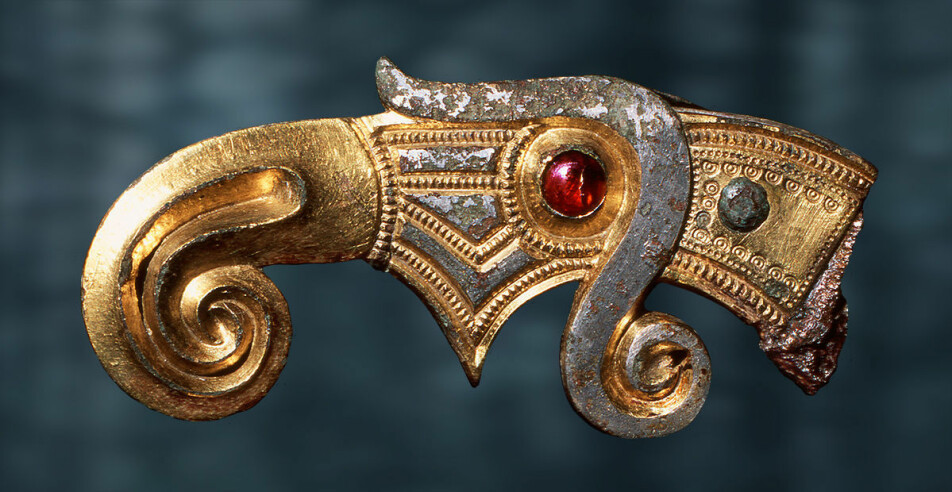
The power animals
What animals did the Iron Age people — and the Vikings — make art about?
“Most often, they made art of what they would call the power animals. These are wild animals with great powers,” says Aannestad.
This includes wolves, bears, wild boars, eagles and falcons. Art was also created depicting serpents and snakes.
“These are animals we find in mythology, such as the Midgard serpent and the Fenris wolf,” Aannestad said.
“The myths tell of Odin, the most powerful of all gods, who could transform into a snake, a fish or a bird,” she said.
According to Norse myths, the Midgard serpent and the Fenrir wolf were brothers. They were both sons of Loki, and a threat to the gods. The Fenrir wolf, for example, ended up killing Odin by devouring him whole.
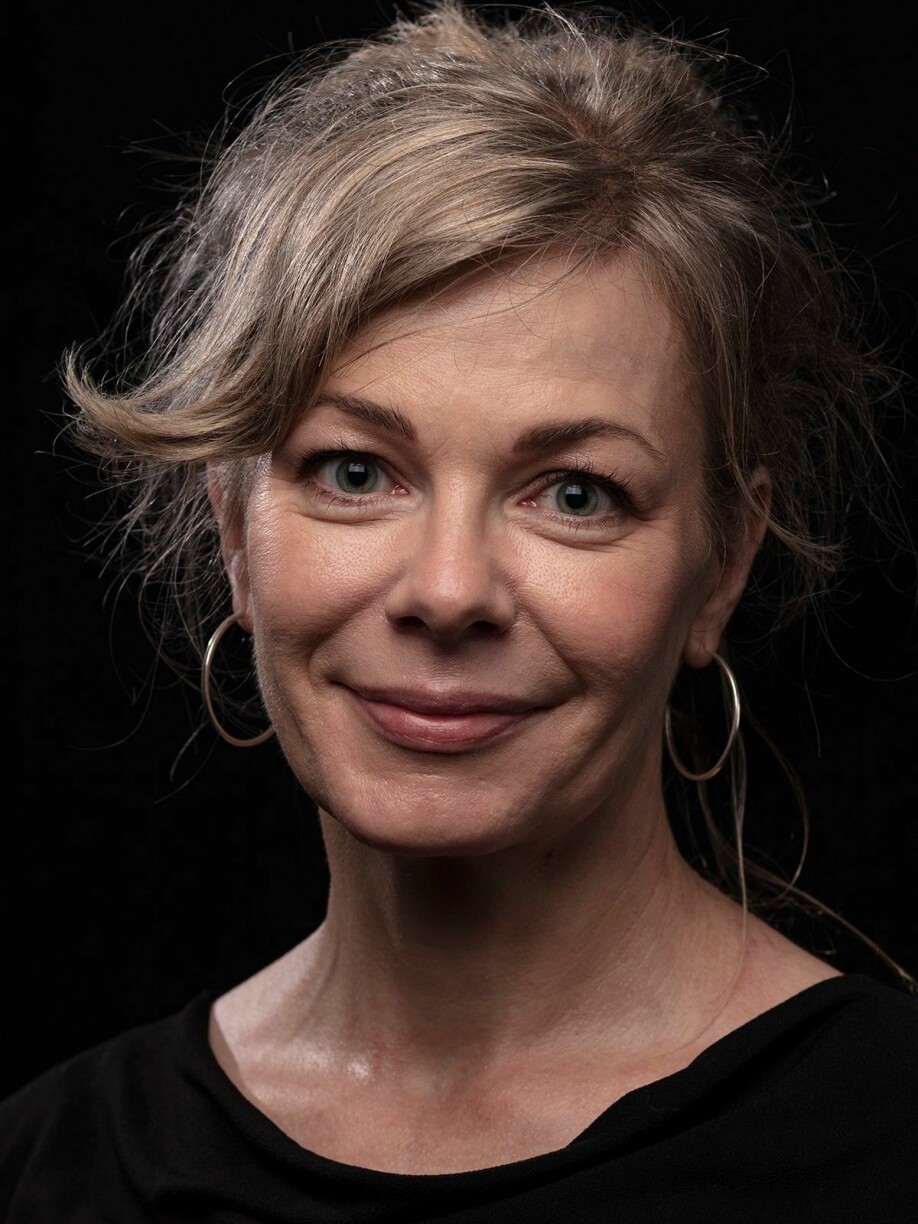
Took on animal characteristics
It was not just the gods who could transform into animals — and vice versa. Humans could also take on characteristics of animals.
There were five animals in particular that gave strength and power: the birds of prey gave people insight and hawk vision, the wolf taught the warrior to thirst for blood, while the wild boar made him fearless. The bear gave power and strength, and the serpent held the world together, Aannestad said.
“People could have their own soul animal, one they called a fylgje, or a guardian spirit, which gave them strength and identity and could be called on if they needed help. In that case, the person would take on the power and characteristics of the guardian spirit,” she said.
“A berserker was, for example, a warrior who turned into a bear — big, strong and invincible,” she said.
Everyday animals
It was not just the power animals that humans had a special relationship with. There were also strong ties between people and everyday animals, such as cows, horses and dogs.
Humans were often buried with these animals.
The museum exhibit contains what is called fire grave, where the body was burned as part of a burial ritual.
“Here archaeologists found a human skeleton with the skeletons from 14 different animal species, including a squirrel,” she said.
This, Aannestad believes, indicates that people had a very close relationship with animals.
“When you are buried with something, it clearly suggests a very intimate relationship,” she says.
Horse sacrifices
Asbjørn Engevik is a researcher and head of the Department of Cultural History at the University of Bergen.
Like Aannestad, he believes that animals have clearly been an important part of the lives of Iron Age people and the Vikings. And this was not solely because they provided a steady supply of food.
“The archaeological material shows us that animals have also had an important ideological significance,” he said to sciencenorway.no.
"The sacrifice of domestic animals, and perhaps especially horses, has been common in funerals of more affluent Vikings," he said.
The remains of 12 horses were found in the Gokstad ship in Vestfold — which is Norway's largest preserved ship from the Viking Age. At least 15 horses were found in the Oseberg ship.
“The horse-related gear has been interpreted by several archaeologists as either an expression of a means of transport to the next world, or as equipment given to the dead for use in the realm of the dead,” he said.


Where does art come from?
People have employed animals as artistic elements in the Nordic countries since the end of Roman times, Engevik says.
“But it is especially during the Migration Period between the 400s and the last half of the 500s that incredibly refined animal art develops. This was an art form found on weapons and jewellery, but also on organic materials such as bones and wood,” he says.
Engevik believes that the animal style, as archaeologists call it, probably has its roots in the classical art world from Southern Europe, but that it developed very quickly in the north, with its own language of design that became unique to the Nordic countries.
Not dragons, but fantasy animals
Many of the objects from the Iron Age and the Viking Age have carvings of animals reminiscent of dragons.
On the Oseberg ship, for example, there are carvings that look like a serpent’s head. There are also strange and almost unnatural animals carved along the entire ship.
Researchers have not been able to determine the species of the animals from the Oseberg ship. This is because people at this time had different ideas about fantasy animals.
“These are hybrid species that have traits from different animals,” Aannestad said, and can be a mix of different animals or a mix of humans and animals.
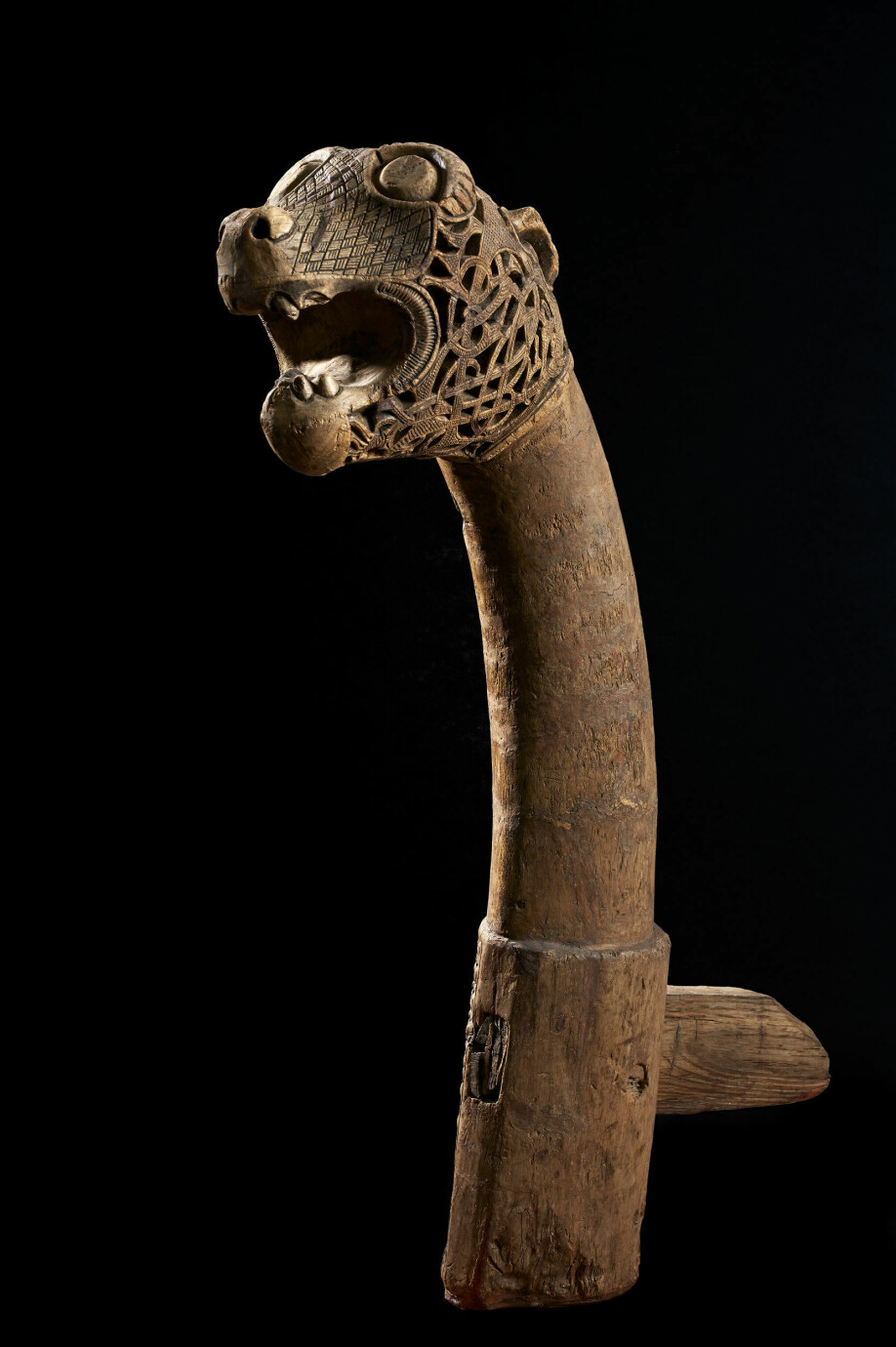
Christianity changed the view of animals
According to Aannestad, the idea of journeys of the soul and metamorphosis meant that part of the human soul was actually an animal. The animal is a companion soul with which we are born.
“This relates to the fact that people had a completely different concept of the soul and the individual than we have today,” she said.
This idea of animals as part of the human soul came to an end when Christianity came to Norway in the middle of the 1000s.
“As early as in the Bible's first book of Moses it says: ‘Ye shall have dominion over the fish of the sea, and over the fowl of the air, and over every living thing that moveth upon the earth’," Aannestad said.
Consequently, the ideas related to the interaction between the animal soul and human soul also disappear, she says.
“Humans now consider themselves rulers over the animals, as we know it today,” she said.
Aannestad still believes it is important to point out that people have a complicated relationship with animals even today, such as pets.
But there is a significant change in the relationship between humans and animals when Christianity comes to Norway.
“In the world God created, the animals lost their divinity and were seen as man's servants or enemies,” Aannestad said.
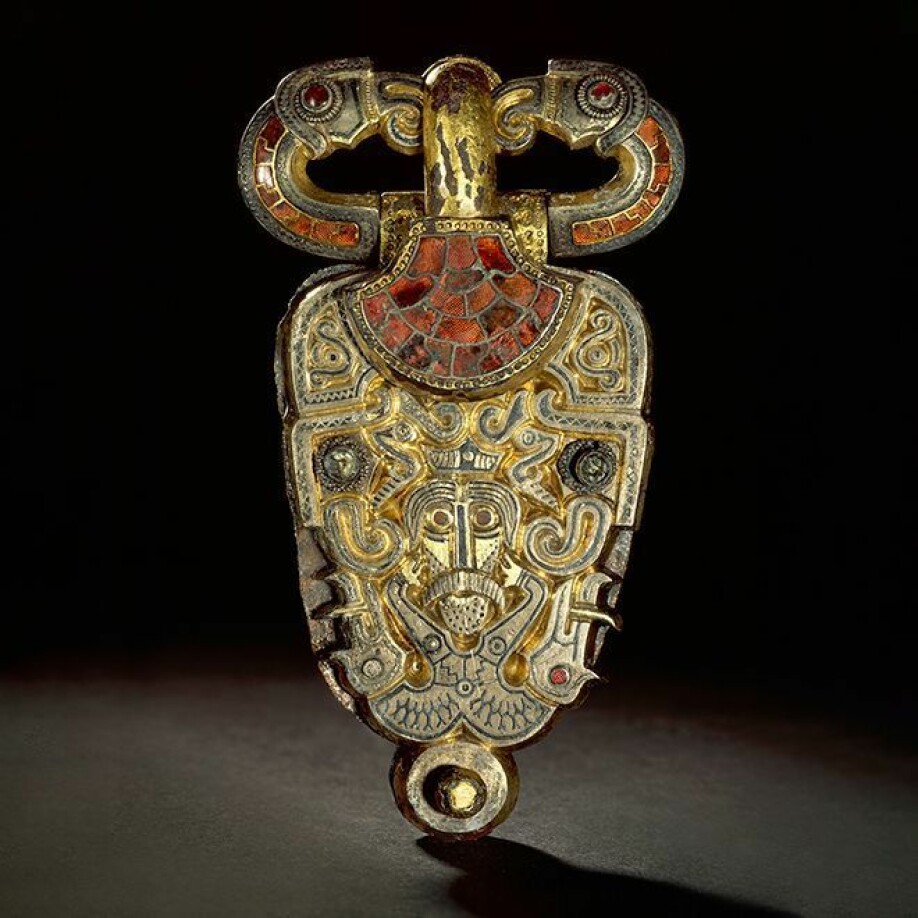
A contradictory relationship with animals
Researchers draw parallels to today.
“Today we have a contradictory relationship with animals; we dress up pets in designer clothes and celebrate their birthdays, at the same time as we eat industrially produced chicken that live in cramped cages under conditions we can hardly imagine,” says Aannestad.
Research on animals and animals' capacity for thinking and feeling is a large and somewhat controversial topic in both science and philosophy.
Can fish feel pain, for example? And can dogs feel jealous?
“Several researchers claim that the animals' experience of the world is not fundamentally different from humans,” Aannestad said.
“This concept leads to greater pressure on legislation and policies on animal welfare, as can be seen, for example in the ban on fur production in Norway, which will be implemented in 2025,” she says.
What does animal art say about society?
The objects on display at the Museum of Cultural History are characterized by something called animal ornamentation.
This is a style that was used to decorate weapons, jewellery, clothing, tools and buildings in the Iron Age from around 400 to 1100 in Northern Europe and Scandinavia.
“Animal ornamentation tells us about what the world looked like before Christianity came to Scandinavia — at a time when the Norse faith dominated,” says Aannestad.
Animal ornamentation is simply a pattern with animals as a motif.
Researchers have been curious about the importance of this enigmatic animal ornamentation since the 19th century, says Aannestad.
Previously, researchers were concerned with documenting which animals were present on the ornaments and which materials were used.
In the last 20 to 25 years, however, researchers have become more concerned with uncovering what lies behind this animal art form. Why were these objects made?
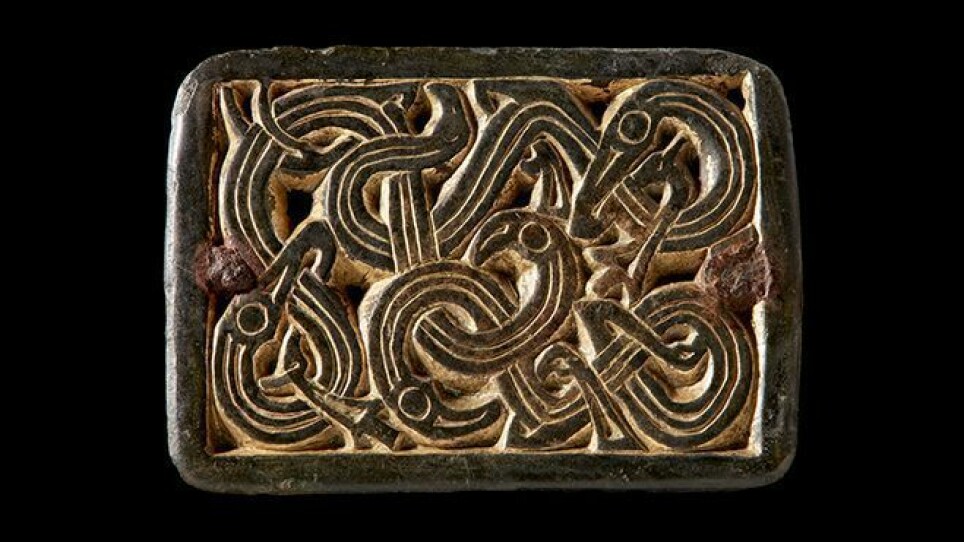
Sagas, weapons and tombs
Researchers have also used other sources to understand the relationship between humans and animals in this period.
They have looked at sagas, poetry and Eddic poems from Norse literature. There, for example, they have seen that naming traditions in the Iron Age were characterized by animal names. Geirulv, for example, is composed of Geir, which means spear, and ulv, which means wolf.
Researchers have also relied on archaeological sources, such as burial sites.
“We have few preserved sources that tell us about life in the Iron Age. Animal ornamentation represents only hazy shadows of this reality. But from the human beings and the human animals, the snakes, the wolves, the birds and the bears, we can sense the contours of a society where the lives of humans and animals were intertwined and where they were mutually dependent on each other. A society where the animals' characteristics and powers were recognized and of fundamental importance for humans to be able to live and survive in nature,” Aannestad said.
Translated by Nancy Bazilchuk.
Read the Norwegian version of this article on forskning.no.
—————
The exhibition at the Museum of Cultural History in Oslo opened on Tuesday 1 June. You can also look at the objects on the museum's website here.
Reference: Ingunn M. Røstad, Hanne L. Aannestad, Katherine Elliott og Anja Mansrud: FABELAKTIGE DYR – fra jernalder og vikingtid. (Fabulous animals — from the Iron Age and Viking Age; catalog for exhibition at the Museum of Cultural History, University of Oslo; in Norwegian). ISBN 978-82-8084-211-4































